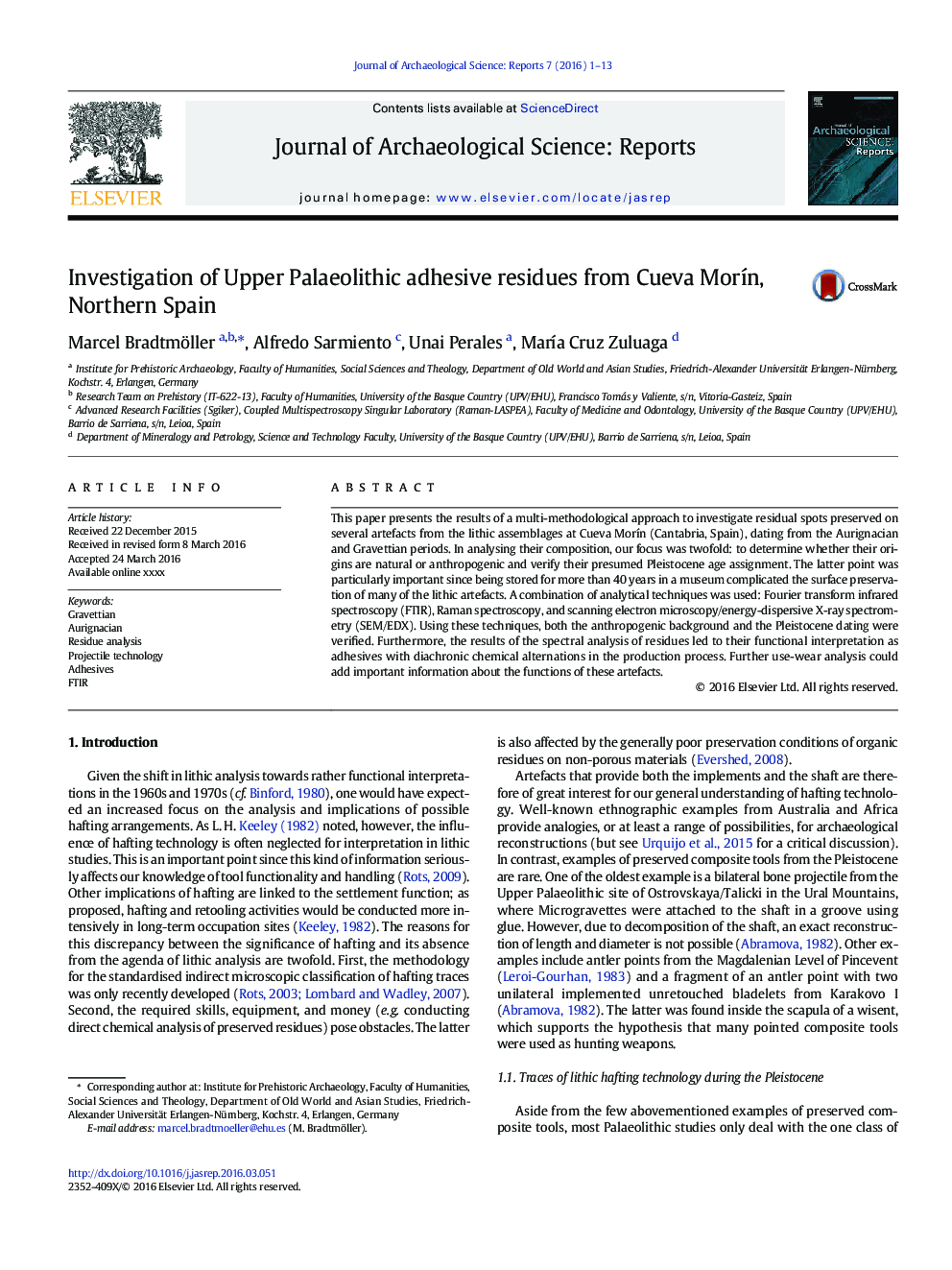| Article ID | Journal | Published Year | Pages | File Type |
|---|---|---|---|---|
| 7446036 | Journal of Archaeological Science: Reports | 2016 | 13 Pages |
Abstract
This paper presents the results of a multi-methodological approach to investigate residual spots preserved on several artefacts from the lithic assemblages at Cueva MorÃn (Cantabria, Spain), dating from the Aurignacian and Gravettian periods. In analysing their composition, our focus was twofold: to determine whether their origins are natural or anthropogenic and verify their presumed Pleistocene age assignment. The latter point was particularly important since being stored for more than 40Â years in a museum complicated the surface preservation of many of the lithic artefacts. A combination of analytical techniques was used: Fourier transform infrared spectroscopy (FTIR), Raman spectroscopy, and scanning electron microscopy/energy-dispersive X-ray spectrometry (SEM/EDX). Using these techniques, both the anthropogenic background and the Pleistocene dating were verified. Furthermore, the results of the spectral analysis of residues led to their functional interpretation as adhesives with diachronic chemical alternations in the production process. Further use-wear analysis could add important information about the functions of these artefacts.
Related Topics
Social Sciences and Humanities
Arts and Humanities
History
Authors
Marcel Bradtmöller, Alfredo Sarmiento, Unai Perales, MarÃa Cruz Zuluaga,
